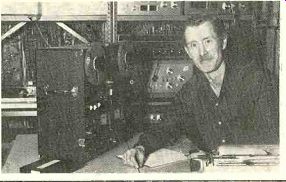
SYNC AND SWIM
ONE of the questions readers often ask me is to explain the difference between the "sound-on-sound" and "multi-sync" (also known as "Sel Sync," "Simul-Sync," and other trade names) provisions found on many of to day's open-reel tape decks. While both features are designed to permit you to create a composite out of individually re corded parts (that is, separate tape tracks), the two approaches are fundamentally different.
First for sound-on-sound. Suppose Smith is set to play three different parts of a pop number: an acoustic guitar, a Hammond organ, and an electric guitar.
His friend Jones will be on the drums but can't come over until later. If you use a regular three-head stereo tape machine, you must go the sound-on-sound route, and you end up with mono, not stereo.
You start by recording Smith's acoustic guitar on the left channel (track one).
Then, when he's ready to add the organ part, Smith must listen (via headphones, probably) to the track he has just laid down in order to stay in time with the al ready recorded guitar. Ah, but right away you have problems-several, in fact. First of all, if Smith merely listens to track one and records on track two, he won't be in time with himself on the tape.
The playback head he listens to is physically at least an inch or so away from the record head laying down the organ track, and that's the distance by which the re corded organ will be out of synchronization with the guitar-amounting to a significant fraction of a second at 7 1/2 or even 15 ips. And second, of course, if you use track one for the guitar and track two for the organ, where do the electric guitar and drums go? The sound-on-sound technique is a solution to both difficulties, although per haps not the best solution, as we shall see. It involves re-recording the contents of track one as you record the organ.
This is accomplished by putting the track-one channel into the playback mode, connecting its output to the line input of track two (the track-two micro phone input is used for the organ), and recording the two inputs simultaneously, using the mike/line mixing facilities to adjust their relative balance.
If the balance and playing are good, you now no longer need the original track one, so to get Smith's third part, the electronic guitar, you have him listen to a playback of the right channel, which you simultaneously re-record along with his new part, back onto track one. This leaves track two available for the drums, and the job is done.
All this re-recording exacts a price, however. Any frequency-response variations in the record-playback of your deck are magnified with each recording generation, as are tape hiss, wow, flutter, modulation noise, and the like. Further, while the "mix" may seem good initially between parts one and two, when three is added you might decide that number one should have been more prominent-but there's no going back to it at that point.
"Multi-sync," an important feature of four-channel decks in particular, eliminates these problems by switching just those sections of the record head where tracks have already been laid down into temporary playback use. There's likely to be a slight loss of playback fidelity in the "sync" mode (most record heads are not really optimum for playback), but you need only enough fidelity for Smith and Jones to hear the beat and stick with it. With a four-channel machine each instrument gets its own track, and all wind up in sync. The final mixdown-customarily onto a second, stereo recorder and usually using "pan pots" to "place" each track within the left to-right stereo panorama-is the only re-recording step, and if balances or placements aren't right the first time, the original tracks are still there for a second or third try.
Also see:
LETTERS TO THE EDITOR (Feb 1977)
AUDIO BASICS: The Greater Good
THE POP BEAT, STEVE SIMELS
Source: Stereo Review (USA magazine)